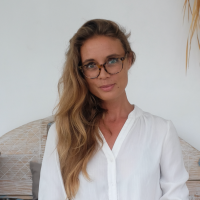In more than one of my posts and articles and in most of what you find on yoga, meditation, self help etc you will hear that awareness is key to anything. But awareness is one of those words that seems a little fluffy to some of us. What does it mean to be aware, to be conscious or to be present?
Are those words interchangeable, do they mean the same thing? Is the process and the results the same for them?
In the different Hindu traditions, you encounter the word “Gunas” quite often and it has been translated into “quality” in English. The way we could apply this concept to something rather concrete is to look at HOW we do things. So let’s say that I go for a walk with the intention of letting go of stress or giving my mind a rest from work. I can then walk with a quality of softness, lightness and with a goal of relaxing.
But if I’m taking a walk because I’ve been still for a long time, that I feel dull and uninspired, then this walk can be a brisk and energising activity. I want to get my system going, I want to wake up. The quality that I’m bringing in is more fiery.
The more I am aware of what is going inside of me, the easier it becomes to notice the quality of the actions I’m taking and maybe even choose which quality I wish to nourish.
There is a famous saying in the yogic philosophy, that “yoga is like a poison: used the right way it can heal you but used the wrong way, it can kill you.”
I would say that whether we do one or the other of those two options depends on the intention behind our yoga practice and therefore the quality that we bring into the experience. But to choose the quality in order for it to heal us, implies that we are aware of what is going on with us.
Being aware means that we take a step back from the actual experience, the thoughts and the emotions we express and read how they are affecting the quality of our organism.
When we let our thoughts and emotions carry us away to worry and fear, we can play the game “I spy with my little eye” and that would be an exercise of bringing us back into presence, therefore calm down the nervous system. Often we call this mindfulness, it has even been defined as “remember to pay attention”. It works very well to change our internal state from “fight/flight/freeze” to “rest/digest”. We say to ourselves what we see, feel and smell around us. By doing so, we are bringing the focus away from the stressful thoughts and into the present moment. We are though, using our thoughts. So we are narrating to ourselves.
The difference with the awareness itself is on the level beyond the thoughts. When we are aware, we are observing from a distance. We could call it “being the witness” of the experience. If we are capable of observing this way, we are not engaging with the thoughts and that is where the difference lay. In this position, we are not taking the thoughts as reality the way we do when we are still narrating to ourselves. The thinking process won’t stop, that idea is no use to us because the thoughts will never stop. But we can observe directly how one string of thoughts makes the organism react, what emotions arise and how the quality of the experience is influenced.
Being present means that we are in this moment, we are present with everything else that makes up the scene. We are with the chairs and the tables, the rain, the person talking to us and we are consciously interacting with it.
Being conscious means that we deliberately choose our actions in the present moment due to what we are experiencing right now. For instance, it would mean that I can lean into the experience of the person I’m interacting with so that they feel supported. If I’m conscious that this person is feeling unsafe, I can deliberately choose an action that will sooth their mood. I am not perpetuating their state by feeling unsafe as well. This is what a parent normally does when their child is feeling scared. A typical situation of unconscious action is the dramatic response to someone’s distress ( “OMG! He hasn’t replied to the message you sent an hour ago???” -wide eyes and open mouth face).
When we develop awareness, we go into the deeper layers of the experience because we are playing with the quality of the situation. This is how you begin to develop capacities of healing to your own life.











Read 0 comments and reply